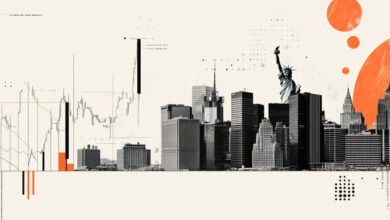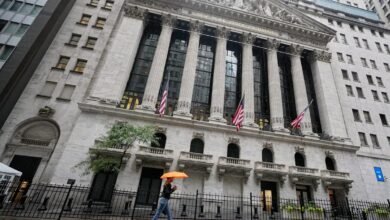Gold futures hit record high, surpassing $3,800 per troy ounce – UPDATED

Gold Futures Hit Record High, Surpassing $3,800 Per Troy Ounce
In a remarkable turn of events in the commodities market, gold futures have surged to unprecedented levels, surpassing the $3,800 per troy ounce mark. This significant milestone has drawn attention from investors, analysts, and economic experts alike, prompting discussions about the implications for the global economy and individual investors.
Understanding Gold Futures
Before delving into the record-breaking prices, it’s essential to understand what gold futures are. Gold futures are contracts that obligate the buyer to purchase gold at a predetermined price on a specified future date. These contracts are traded on various commodities exchanges, such as the COMEX (part of the New York Mercantile Exchange).
Investors often use gold futures as a hedge against inflation or economic uncertainty, making them a popular choice in volatile market conditions. The price of gold is influenced by a variety of factors, including geopolitical tensions, currency fluctuations, and changes in interest rates.
The Mechanics of Gold Futures Trading
Gold futures trading involves speculating on the future price of gold. Buyers and sellers enter into contracts with specific terms, including the quantity of gold, the price per ounce, and the delivery date. If the market price exceeds the contracted price, the buyer stands to gain, while the seller faces a potential loss, and vice versa.
Leveraging is a key feature of futures trading, allowing investors to control large amounts of gold with a relatively small capital outlay. However, this also introduces a higher risk, as price fluctuations can lead to significant gains or losses.
Factors Driving Gold Prices Up
Several factors have contributed to the recent surge in gold prices:
1. Economic Uncertainty
Global economic conditions can heavily influence gold prices. Factors such as rising inflation rates, concerns about economic slowdowns, and geopolitical tensions have led many investors to seek the safety of gold. When other investments appear risky, gold is often viewed as a “safe haven.”
For instance, during periods of economic turbulence, such as the COVID-19 pandemic, investors flocked to gold, driving prices higher. This trend is expected to continue as uncertainties in global markets persist.
2. Currency Fluctuations
Gold is typically inversely correlated with the strength of the U.S. dollar. When the dollar weakens, gold becomes cheaper for holders of other currencies, thereby increasing demand. Recent developments in U.S. monetary policy, including interest rate adjustments and inflation forecasts, have created fluctuations in the dollar, further impacting gold prices.
For example, if the Federal Reserve signals a delay in interest rate hikes due to sluggish economic growth, it can lead to a weaker dollar, prompting an increase in gold purchases.
3. Supply Chain Constraints
The global supply chain has faced disruptions due to various factors, including the COVID-19 pandemic. These disruptions have affected gold mining and production, limiting supply while demand remains strong. Countries with significant mining operations, such as South Africa and China, have reported operational challenges, leading to supply shortages.
4. Investment Demand
Exchange-traded funds (ETFs) and institutional investors have increasingly turned to gold as a way to diversify their portfolios. The growing interest in gold-backed securities has added additional pressure to prices, pushing them higher. Many investors view ETFs as a convenient way to gain exposure to gold without the need for physical storage.
Implications of Rising Gold Prices
The rise in gold futures to record highs carries several implications:
For Investors
Investors might see gold as an attractive investment opportunity, especially in uncertain economic times. The surge in prices could lead to heightened interest in gold-related investments, such as mining stocks or ETFs that focus on gold assets. This could also result in increased trading volumes in gold futures and options, as investors seek to capitalize on price movements.
For the Economy
High gold prices can reflect broader economic concerns. While they signal that investors are seeking safety, they may also indicate a lack of confidence in other asset classes. This trend could influence monetary policy decisions by central banks, particularly if inflation continues to rise. For instance, central banks may adjust interest rates or implement measures to stabilize the economy in response to rising gold prices.
For Consumers
As gold prices rise, so too can the costs of jewelry and other consumer goods that incorporate gold. This could lead to higher prices for consumers, impacting spending habits and overall economic activity. For example, jewelers may increase the prices of gold jewelry, leading consumers to reevaluate their purchasing decisions.
Historical Context
Gold prices have fluctuated significantly over the decades. The most notable spike prior to this recent surge occurred during the financial crisis of 2008, when gold reached its previous record of over $2,000 per troy ounce. The current market conditions have surpassed that historical peak, showcasing the evolving landscape of global finance.
Historically, gold has been viewed as a hedge against inflation and currency devaluation. During periods of economic distress, such as the 1970s oil crisis and the 2008 financial crisis, gold prices have experienced substantial increases, leading many to consider it a reliable store of value.
Future Outlook
While predicting the future of gold prices is inherently uncertain, analysts suggest that continued economic instability may keep gold in demand. Factors such as inflation rates, monetary policy changes, and geopolitical tensions will likely play critical roles in shaping the price trajectory of gold in the coming months.
Expert Opinions
Market analysts and financial experts are divided on the sustainability of current gold prices. Some suggest that the trend may continue, driven by ongoing economic concerns, while others warn that prices could correct themselves as market conditions stabilize.
For instance, if inflation rates begin to stabilize and economic indicators show improvement, the demand for safe-haven assets like gold may decrease, potentially leading to a decline in prices. Conversely, if geopolitical tensions escalate or economic indicators worsen, gold could see further price increases.
FAQs
What does it mean when gold futures hit a record high?
When gold futures reach a record high, it indicates that the price of gold is significantly higher than it has ever been in the past. This can reflect economic uncertainty, increased demand for gold as a safe-haven asset, or other market dynamics.
How do gold futures work?
Gold futures are contracts that allow investors to buy or sell gold at a predetermined price on a future date. They are commonly used to hedge against price fluctuations and to speculate on future price movements.
Why do investors buy gold?
Investors typically buy gold as a hedge against inflation, currency fluctuations, and economic instability. Gold is often seen as a safe haven asset during times of financial uncertainty.
What impacts gold prices?
Gold prices are influenced by various factors, including economic conditions, currency strength, interest rates, and supply and demand dynamics in the market.
Is now a good time to invest in gold?
Whether it is a good time to invest in gold depends on individual financial circumstances and market conditions. Consulting with a financial advisor can provide personalized guidance based on current trends and economic factors.
In summary, the recent spike in gold futures to over $3,800 per troy ounce marks a significant milestone in the commodities market. As economic uncertainties continue, the implications for investors and the global economy will unfold in the months to come. Understanding the factors influencing gold prices and the broader economic landscape can help investors make informed decisions in this evolving market.
Credit: Source link






